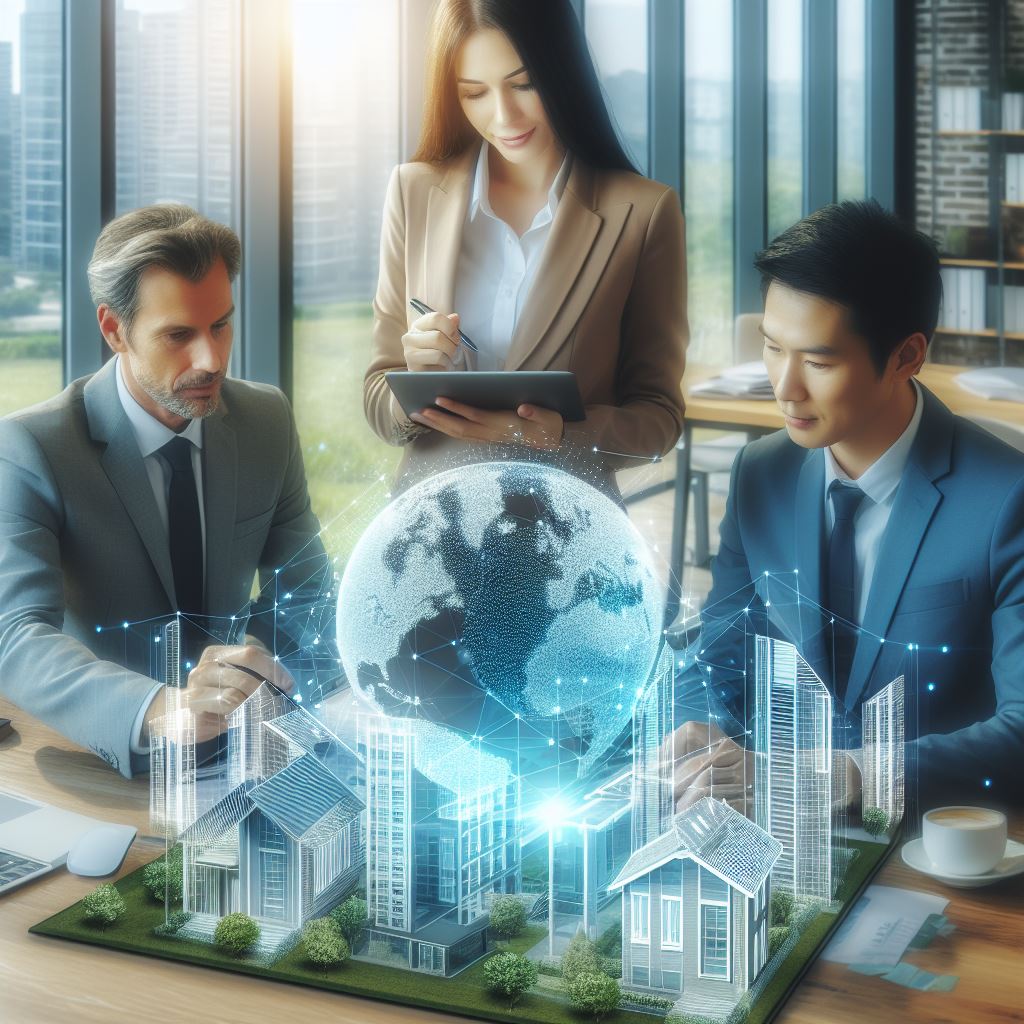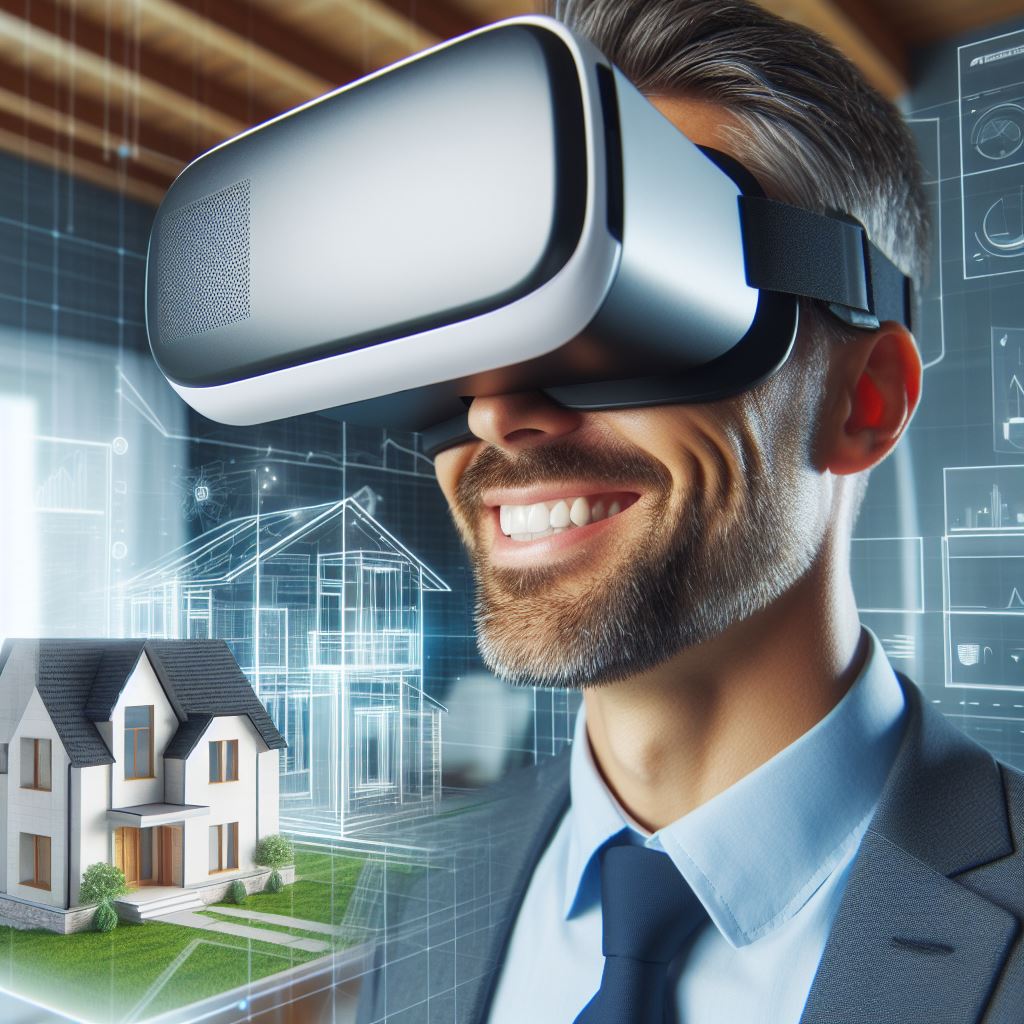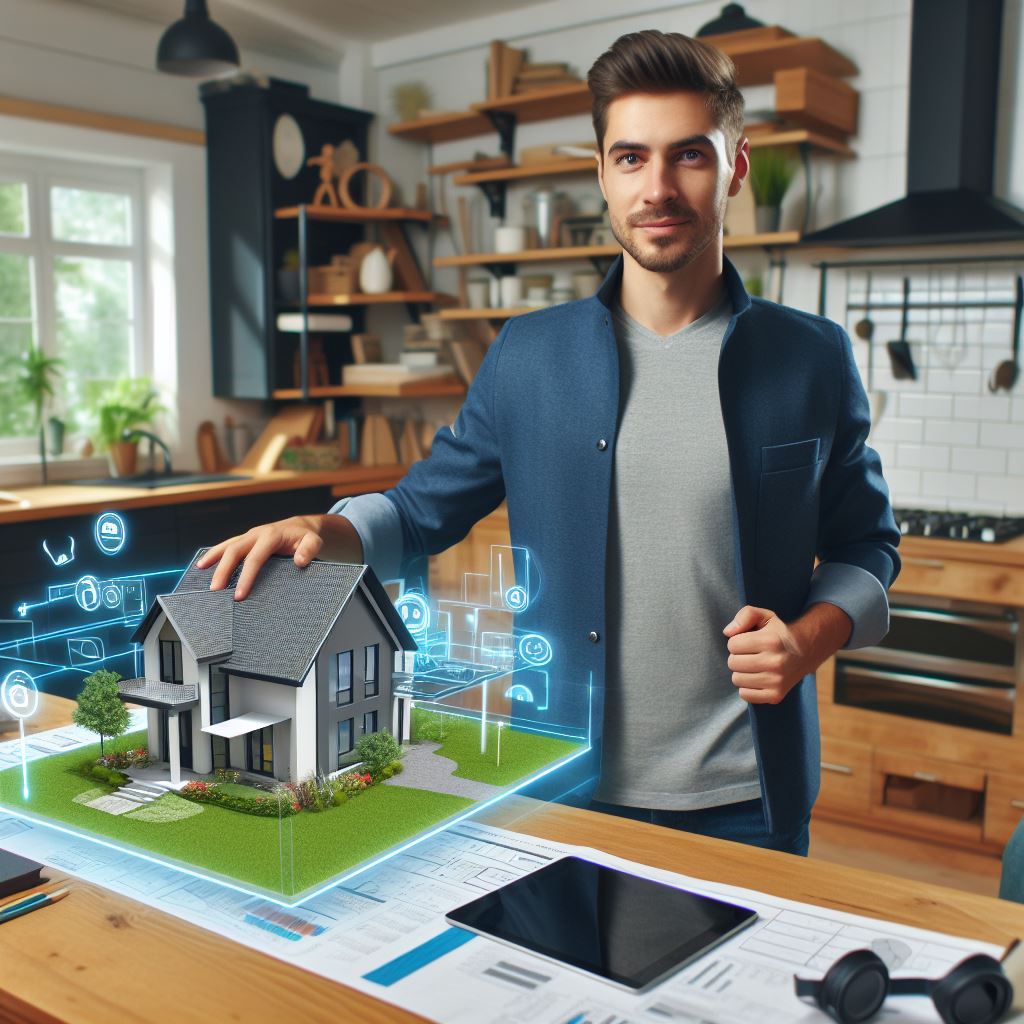Introduction
Green tech in sustainable real estate refers to the integration of environmentally friendly technologies and practices in real estate projects.
It plays a crucial role in reducing environmental impacts and promoting sustainability in the industry. This blog post provides an overview of the importance of incorporating green tech in real estate projects.
Importance of Incorporating Green Tech in Real Estate Projects
With the increasing concern for climate change and depleting natural resources, incorporating green tech in real estate projects is of utmost importance.
It allows developers to minimize the environmental footprint of their buildings while maximizing energy efficiency and conservation.
By utilizing green technologies such as solar panels, energy-efficient appliances, and smart home systems, real estate projects can significantly reduce energy consumption and greenhouse gas emissions.
These technologies not only benefit the environment but also provide cost savings for homeowners and tenants.
Furthermore, incorporating green tech in sustainable real estate enhances the overall quality of living.
Green buildings often have better indoor air quality, natural lighting, and access to green spaces.
This promotes the health and well-being of occupants and creates a more comfortable and productive living environment.
Overview of the Blog Post
In this blog post, we will delve deeper into the different aspects of green tech in sustainable real estate.
We will discuss various green building certifications and standards, the benefits of green tech in real estate, and the challenges faced in implementing sustainable practices.
Additionally, we will provide practical tips for incorporating green tech in real estate projects and showcase successful examples from around the world.
Stay tuned for an insightful exploration of green tech in sustainable real estate!
Benefits of Green Tech in Sustainable Real Estate
Green technology has become an integral part of sustainable real estate, offering numerous benefits across environmental, economic, and social aspects.
Environmental Benefits
- Reduction of carbon emissions: Green tech solutions contribute to lower carbon emissions, helping combat climate change and promote a healthier environment.
- Preservation of natural resources: By adopting sustainable practices, real estate projects minimize the exploitation of essential resources like water and energy, ensuring their availability for future generations.
- Improved air and water quality: Green buildings employ advanced ventilation systems that enhance indoor air quality, reducing pollutants and promoting a healthier living environment. Additionally, sustainable water management systems ensure efficient water usage and minimize wastage.
Economic Benefits
- Cost savings on energy and maintenance: Green buildings utilize energy-efficient technologies and renewable energy sources, resulting in significant savings on electricity bills and long-term maintenance expenses.
- Increase in property value: Sustainable real estate projects have been proven to attract higher property values and rental rates, making them lucrative investments.
- Tax incentives and financial support: Governments often provide tax incentives and financial support for developers and owners of green buildings, encouraging their adoption and further driving economic benefits.
Social Benefits
- Enhanced occupant health and productivity: Green buildings prioritize occupant well-being by providing optimal indoor air quality, ample natural lighting, and noise reduction. These factors positively impact the health, comfort, and productivity of occupants.
- Creation of sustainable communities: Sustainable real estate developments promote the creation of well-planned, walkable neighborhoods with ample green spaces, public transportation options, and amenities. These communities foster a sense of belonging, social cohesion, and overall well-being.
In essence, the integration of green technology in sustainable real estate offers a multitude of benefits.
From reducing carbon emissions and preserving natural resources to generating cost savings and increasing property values, green tech solutions prove to be economically and environmentally advantageous.
Additionally, the focus on occupant health, well-being, and the creation of sustainable communities emphasizes the social benefits associated with sustainable real estate.
By embracing green technology, the real estate industry can contribute significantly to building a more sustainable and prosperous future for all.
Examples of Green Tech in Sustainable Real Estate
Green technology plays a crucial role in creating sustainable real estate developments.
By implementing innovative and environmentally friendly solutions, developers can reduce the ecological impact of buildings and enhance their overall sustainability.
Here are some examples of green tech in sustainable real estate:
Energy-efficient building materials and design:
Green buildings incorporate energy-efficient materials like insulated windows and advanced insulation systems.
Additionally, sustainable designs optimize natural lighting and ventilation to minimize the need for artificial lighting and air conditioning.
Renewable energy sources
Utilizing renewable energy sources such as solar panels and wind turbines can significantly reduce a building’s reliance on fossil fuels.
These technologies generate clean energy, reducing greenhouse gas emissions and the overall environmental footprint.
Water conservation technologies
Water scarcity is a major concern in many regions, making water conservation technologies vital in sustainable real estate.
Examples include low-flow fixtures, graywater systems, and rainwater harvesting, which reduce water consumption and promote efficient water use.
Waste management systems
Implementing effective waste management systems, such as recycling and composting facilities, helps minimize the amount of waste sent to landfills.
Proper waste disposal practices contribute to the overall sustainability of real estate developments.
Smart home automation and energy monitoring:
Smart home automation systems enable residents to control and monitor energy usage, lighting, and temperature through connected devices.
These systems optimize energy consumption, resulting in reduced energy waste and lower utility bills.
Vertical greening and urban agriculture
Vertical greening involves incorporating vegetation into building facades, promoting energy efficiency, air purification, and aesthetics.
Urban agriculture initiatives, such as rooftop gardens and community farms, encourage food production in urban areas, reducing the reliance on long-distance transportation and promoting sustainable living.
These examples demonstrate how green technologies can be applied across different aspects of sustainable real estate.
By implementing these innovative solutions, developers can create environmentally friendly buildings that align with the principles of sustainability.
In general, green tech in sustainable real estate encompasses various solutions that contribute to the ecological and economic viability of buildings.
By incorporating energy-efficient materials and designs, utilizing renewable energy sources, implementing water conservation technologies, adopting efficient waste management systems, promoting smart home automation, and integrating vertical greening and urban agriculture, real estate developers can create sustainable, eco-friendly buildings.
These technologies also benefit residents by reducing energy consumption, lowering utility bills, and promoting a healthier living environment.
Overall, the adoption of green tech in sustainable real estate is a crucial step towards a more sustainable and environmentally conscious future.
Read: Blockchain’s Role in Real Estate Transactions
Case Studies of Successful Implementations
LEED-certified buildings
LEED-certified buildings have paved the way for sustainable real estate development.
These buildings have achieved high levels of energy efficiency and environmental performance, reducing their carbon footprint.
LEED-certified buildings offer tangible examples of how sustainable design and construction practices can be effectively implemented.
These buildings have undergone a rigorous certification process, ensuring that they meet the highest standards of energy efficiency, water conservation, and environmental stewardship.
By using recycled materials, maximizing natural lighting, and implementing innovative technologies, LEED-certified buildings have shown that sustainability can be seamlessly blended with functionality and aesthetics.
Eco-friendly neighborhood developments
Eco-friendly neighborhood developments have shown how sustainable living can be integrated into communities.
Through thoughtful planning and design, these developments prioritize green spaces, renewable energy sources, and efficient transportation options.
Eco-friendly neighborhood developments have gone beyond individual buildings to create sustainable communities.
These developments prioritize green spaces and pedestrian-friendly design, reducing the reliance on cars and encouraging alternative transportation modes.
By incorporating renewable energy sources and implementing water management strategies, these neighborhoods have reduced their environmental impact while providing residents with a high quality of life.
Net-zero energy buildings
Net-zero energy buildings have demonstrated the potential for self-sufficiency in terms of energy consumption.
By utilizing renewable energy sources such as solar panels and geothermal systems, these buildings produce as much energy as they consume.
Net-zero energy buildings have taken sustainability a step further by aiming to produce as much energy as they consume.
These buildings rely on solar panels, geothermal systems, and other renewable energy sources to generate electricity.
Through advanced insulation and energy-efficient design, they minimize energy waste and optimize overall energy performance.
Net-zero energy buildings provide a glimpse into a future where buildings can independently meet their energy needs, significantly reducing the reliance on fossil fuels and mitigating climate change.
Sustainable retrofitting projects
Sustainable retrofitting projects have showcased the transformative power of green technology in existing buildings.
By upgrading HVAC systems, insulation, and lighting, these projects have improved energy efficiency and reduced operational costs.
Sustainable retrofitting projects have shown that existing buildings can also become more energy-efficient and environmentally friendly.
By upgrading HVAC systems, insulation, and lighting, these projects have drastically reduced energy consumption and greenhouse gas emissions.
Retrofitting older buildings not only improves their sustainability but also enhances occupant comfort and reduces operating costs.
These projects demonstrate the importance of considering existing building stock and transforming it into environmentally responsible assets.
Green building initiatives in affordable housing
Green building initiatives in affordable housing have made sustainable living accessible to a wider population.
By incorporating energy-efficient appliances, water-saving fixtures, and renewable energy sources, these initiatives reduce utility costs for residents.
Green building initiatives in affordable housing emphasize the inclusivity and accessibility of sustainable living.
By implementing energy-efficient appliances, water-saving fixtures, and renewable energy sources, these initiatives reduce utility costs for low-income residents.
Additionally, they promote healthier indoor environments through improved ventilation and air quality.
Sustainable affordable housing initiatives ensure that environmental benefits are extended to all members of society, creating more equitable and resilient communities.
Ultimately, case studies of successful implementations in green tech and sustainable real estate provide compelling evidence of the benefits and feasibility of sustainable practices.
From LEED-certified buildings to net-zero energy developments, these examples showcase how environmentally conscious design and construction can create high-performing buildings and communities.
By adopting green technologies and integrating sustainability into every stage of real estate development, we can pave the way for a more sustainable and resilient future.
Read: Virtual Home Tours: A New Era in Real Estate

Challenges and Solutions
Green technology has the potential to revolutionize the sustainable real estate industry, but it is not without its challenges.
In this section, we will explore some of the key hurdles faced by developers and investors in implementing green tech in real estate, and the solutions that can help overcome them.
Cost barriers and return on investment
One of the main challenges faced by developers is the initial high cost of implementing green technology.
This can include the installation of solar panels, energy-efficient heating and cooling systems, and smart building automation.
However, it is important to note that while the upfront cost may be substantial, the long-term savings on energy and utility bills can significantly outweigh the initial investment.
Additionally, there are various grants, tax incentives, and financing options available for green projects, making them more economically viable.
Lack of knowledge and expertise
Another challenge is the lack of knowledge and expertise in green technology among real estate professionals.
Many developers and investors may not fully understand the benefits and intricacies of implementing green tech, making it difficult to adopt these solutions.
To address this, industry associations and organizations should offer training programs and resources to educate real estate professionals about the latest green technologies and their implementation.
Limited regulatory frameworks and codes
The absence of robust regulatory frameworks and codes specific to green technology in real estate poses a significant challenge.
Without clear guidelines and standards, developers may hesitate to invest in green tech due to uncertainty and potential risks.
To overcome this, governments and industry regulators should develop comprehensive regulations that promote and incentivize the adoption of green technology in real estate.
This will provide a level playing field for developers and ensure the long-term sustainability of green projects.
Integration of green tech with existing infrastructure
Integrating green technology with existing infrastructure can be a complex and costly endeavor.
Retrofitting old buildings to incorporate energy-efficient systems or renewable energy sources may require significant modifications and disruptions.
To tackle this challenge, stakeholders should collaborate with experienced engineers and architects who specialize in green building retrofits.
Advanced planning and careful execution can help minimize costs and ensure a seamless integration process.
Innovations and advancements in green tech
As technology evolves, new innovations and advancements in green tech continue to emerge.
Staying updated with the latest trends can be overwhelming for real estate professionals, making it difficult to choose the most suitable and cost-effective solutions.
Building strong partnerships with technology providers and staying connected with industry networks can help overcome this challenge.
Collaboration can provide valuable insights and ensure access to cutting-edge green technologies.
To sum it up, while there are various challenges associated with implementing green technology in sustainable real estate, there are also numerous solutions available.
Overcoming cost barriers, increasing knowledge and expertise, developing regulatory frameworks.
Integrating green tech with existing infrastructure, and staying abreast of innovation are all crucial steps towards creating a greener and more sustainable real estate industry.
Read: Drone Photography: Changing Real Estate
Future Trends in Green Tech in Sustainable Real Estate
Advancements in building automation and IoT technology
The future holds exciting possibilities for green tech in sustainable real estate.
Advancements in building automation and IoT technology are set to revolutionize the industry, making buildings smarter and more energy-efficient.
Integration of artificial intelligence for energy optimization
With the integration of artificial intelligence (AI), energy optimization will reach new heights.
AI algorithms will analyze data from various sensors and systems to make intelligent decisions that conserve energy and reduce environmental impact.
Smart technologies will automatically adjust lighting, temperature, and airflow to optimize comfort and efficiency.
Development of smart grids and microgrids
The development of smart grids and microgrids will further contribute to sustainability in real estate. Smart grids enable the efficient distribution of electricity by monitoring and adjusting demand in real-time.
Microgrids, on the other hand, are localized electricity generation and distribution systems that can operate independently of the main grid.
These technologies allow buildings to generate and store renewable energy, reducing reliance on traditional power sources and minimizing the carbon footprint.
Expansion of green tech in commercial real estate
Commercial real estate will witness an expansion of green tech adoption, driven by both environmental concerns and market demand.
Businesses are increasingly recognizing the value of eco-friendly buildings, as they not only contribute to sustainability goals but also attract environmentally-conscious tenants and investors.
Green buildings provide better indoor air quality, reduced energy costs, improved employee productivity, and enhanced reputation.
International efforts and global collaborations
Furthermore, international efforts and global collaborations will play a crucial role in advancing green tech in sustainable real estate.
Countries around the world are prioritizing sustainability and setting ambitious targets to reduce greenhouse gas emissions.
Collaborative initiatives and knowledge-sharing platforms are fostering innovation and accelerating the adoption of green technologies across borders.
By working together, policymakers, researchers, and industry professionals can drive change at a global scale, making sustainable real estate a reality everywhere.
In short, the future trends in green tech in sustainable real estate are promising.
Building automation, AI, smart grids, and microgrids are revolutionizing the industry, maximizing energy efficiency, and reducing environmental impact.
Commercial real estate is embracing green tech to attract environmentally-conscious stakeholders. International efforts and global collaborations are driving change on a global scale.
With these advancements, the future of sustainable real estate looks brighter than ever.
Read: Smart Homes: Future of Real Estate Tech
Conclusion
Green tech plays a vital role in sustainable real estate.
Its benefits are numerous, ranging from reducing energy consumption and carbon emissions to improving indoor air quality and promoting a healthier living environment.
As we move forward, it is crucial for real estate developers and investors to incorporate green tech into their future projects.
By doing so, they not only contribute to environmental conservation but also enhance the value and marketability of their properties.
To truly make a difference, it is necessary for readers to educate themselves further on green tech.
By learning more about its potential impact, individuals can make informed decisions and actively participate in sustainable real estate practices.
In summary, green tech in sustainable real estate is not merely a trend but a necessity.
Its significance cannot be overstated, and it is up to each one of us to drive change.
Let us seize this opportunity to create a greener, more sustainable future.




